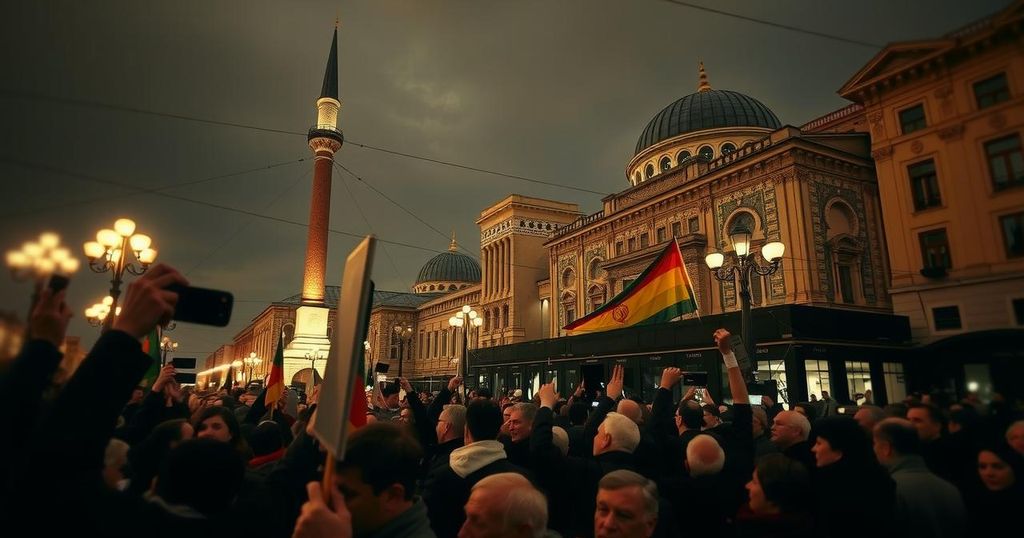The period from 1960 to 1963 under Shah Mohammad Reza Pahlavi saw the implementation of the White Revolution, which aimed at extensive social and economic reforms through land redistributions and women’s rights advancements. While these reforms initially spurred economic growth and modernization, they met with considerable opposition from clerical authorities, leading to a backlash that culminated in widespread urban discontent and the eventual Islamic Revolution in 1979.
The period from 1960 to 1963 marked a pivotal moment in Iranian history, particularly under the rule of the Pahlavi dynasty. During this time, the government, led by Shah Mohammad Reza Pahlavi, initiated significant industrial growth while suppressing opposition political parties that threatened his absolute power. The dissolution of the 20th Majles in 1961 facilitated the enactment of the land reform law of 1962. This legislation compelled large landowners to forfeit significant portions of their land as part of a redistribution program aimed at benefiting small-scale farmers. In exchange for their lands, former landlords received shares in state-owned industries, while farmers shared in agricultural profits, leading to the establishment of cooperatives that replaced traditional landowners in rural financing and development. Following these initial reforms, the shah implemented his “White Revolution,” a comprehensive scheme introduced in a plebiscite and ratified in 1963, which aimed at extensive social, political, and economic reforms. About 2.5 million families benefitted from land redistribution, literacy and health programs were established to uplift rural areas, and laws enhancing women’s rights were enacted, significantly altering the social fabric of Iran. Fuelled by oil revenues, the economic landscape of Iran experienced dramatic growth, with per capita income rising significantly. However, not all were in favor of the shah’s progressive policies. Prominent Shiʿi leaders condemned the White Revolution, arguing that certain liberalizations, particularly relating to women, contradicted Islamic values. The reforms also undermined traditional clerical power; the establishment of secular courts diluted clerical authority, while educational reforms diminished the ulama’s monopoly over scholarship. This dissatisfaction culminated when Ayatollah Ruhollah Khomeini, initially outspoken against the reforms, was exiled after the government’s violent suppression of protests in 1963. During his exile, Khomeini developed the ideology of velāyat-e faqīh, advocating for a clerically-governed Islamic state. Although land reforms initiated a break from traditional power structures, they faltered due to poor infrastructure and inadequate support, leading to high farm failure rates and mass migration to urban areas. This urbanization resulted in socio-economic challenges, including lower living standards and increased tensions within the populace, which undermined the shah’s rule. The international landscape during this period saw Iran align closely with Western countries, particularly the United States, which bolstered its military forces through extensive aid. Yet this dependency stoked discontent, portraying the shah as vulnerable to foreign influence. Oil revenues allowed for significant economic initiatives, including the production of automobiles and the establishment of a robust steel industry. Nevertheless, economic disparities persisted, marked by stagnation in living standards and inflation, despite the appearance of prosperity. Political repression furthered resentment among various factions, including secular intellectuals and marginalized political groups. By the late 1970s, widespread discontent with the Pahlavi regime united diverse opposition groups, including Khomeini’s followers, igniting a revolutionary fervor that ultimately led to the downfall of the monarchy. The combined weight of disillusionment with economic direction, lack of political participation, and cultural discontent regarding Westernization and clerical marginalization catalyzed a broad-based resistance against the Pahlavi dynasty—an uprising demonstrated through protests and ideological opposition fueled by Khomeini’s messages, effectively transforming the sociopolitical landscape of Iran.
The White Revolution marks a significant period in Iran’s modernization efforts under the Pahlavi dynasty from 1960 to 1979. This period of reform initiated by Shah Mohammad Reza Pahlavi aimed to reshape Iranian society through land reforms, industrial advancements, and increased educational opportunities, particularly for women. However, these efforts were met with resistance from traditionalists and clerical authorities, who viewed the reforms as a threat to Islamic values and their influence over society. The consequences of these reforms created economic opportunities accompanied by a growing discontent leading to widespread urban migration, while political repression intensified dissent against the monarchy. This tumultuous backdrop set the stage for the eventual Islamic revolution led by Khomeini.
In summary, the years 1960 to 1963 were transformative for Iran, underscoring a complex interplay between rapid modernization and the resistance it engendered. The shah’s ambitious reforms through the White Revolution sought to elevate social, political, and economic conditions, yet fundamentally challenged the clerical authority and traditional societal structures. The subsequent social unrest, compounded by economic disparities and political repression, fostered a fertile ground for revolutionary sentiments that would culminate in the 1979 Islamic Revolution, heralding a new era in Iranian history characterized by the establishment of an Islamic Republic.
Original Source: www.britannica.com






